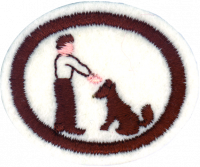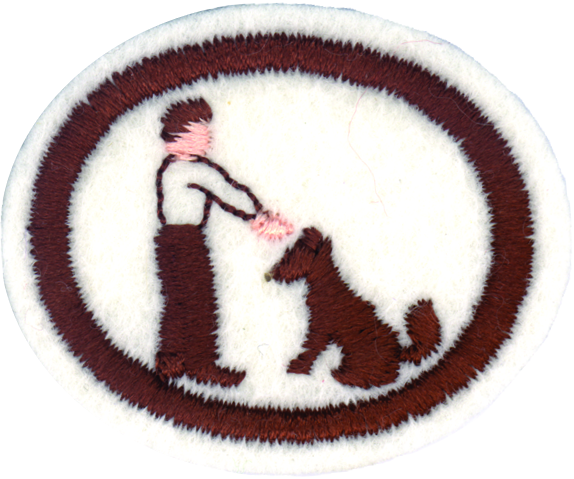Difference between revisions of "AY Honors/Dog Care and Training/Answer Key/es"
(Created page with "</noinclude> <!-- 2. Realizar por lo menos dos de las siguientes actividades: --> <noinclude>") |
(Created page with "</noinclude> <!-- 3. Describir la forma de cómo enseñar a un cachorro a hacer sus necesidades biológicas en un lugar especialmente para él. -->") |
||
| Line 98: | Line 98: | ||
<!-- 4. Explicar en detalle cómo bañar a un perro y el cuidado de su higiene en general. --> | <!-- 4. Explicar en detalle cómo bañar a un perro y el cuidado de su higiene en general. --> | ||
| − | + | {{clear}} | |
| − | |||
| − | |||
| − | + | {{clear}} | |
| − | |||
| − | |||
| − | + | {{clear}} | |
| − | |||
| − | |||
| − | |||
| − | |||
| − | |||
| − | |||
| − | |||
| − | |||
<div lang="en" dir="ltr" class="mw-content-ltr"> | <div lang="en" dir="ltr" class="mw-content-ltr"> | ||
Revision as of 22:08, 9 April 2021
Nivel de destreza
2
Año
1976
Version
16.05.2024
Autoridad de aprobación
Asociación General
1
1a
1b
1c
2
2a
2b
2c
3
4
Many use an indoor tub for dog bathing. For many home owners this can be burdensome, especially with large dogs. If you have an outside dog, chances are they may be particularly more dirty than an inside dog. Getting your large, dirty dog inside can be difficult and messy. You can always wash your dog outside with a water hose. It is important to be conscious of the outside temperature and the temperature of your outside faucet water.
It may be useful to purchase an elevated dog bath tub that brings the dog up to the level of the human, not vice versa. The ability to wash your dog without bending down or getting on your knees is not only convenient, but less stressfull on your body. Many tubs also have straps to hold your dog inside the tub and prevent them from slipping and hurting themselves. A simple search for dog bath tub will reveal many providers of quality tubs especially for bathing your dog. They can also substitute for a grooming table.
Hygiene
Other areas of dog hygiene include brushing, cleaning its ears, and trimming its nails.
- Brushing
- This is especially important for long-haired dogs. Brushing will pick up loose hair from the dog and reduce shedding problems. Have your dog sit or lie down, and use a dog brush to gently sweep through its fur. Do not tug at tangles (it hurts!) If you find a heavily matted area of fur that cannot be brushed out, carefully cut it out with scissors, but be very careful. You do not want to injure your dog, and you do not want to give it a bad haircut either!
- Cleaning the ears
- This can be done with a damp paper towel. Again, you get your dog into a sitting position and begin petting it. Scratch it around the ears, and then gently work the paper towel into the inner ear, rubbing and massaging the dog as you clean. Do not insert the paper towel into the ear canal where you will be unable to retrieve it. Throw the soiled paper towel away and use a new one for the other ear.
- Trimming the claws
- For this you will need a special nail trimmer made just for trimming the nails of dogs. You should be able to find one at a pet supply store. Do not use nail trimmers made for human nails. Carefully examine your dog's nail, looking for the quick. If you trim it too short, you will cut into the quick, causing much pain for your dog, and causing it to bleed (sometimes profusely). Trim the front paws first, and then if desired, trim the rear ones as well. Dogs that spend a lot of time running on pavement or rocks will not need their nails trimmed.
5
Decide how often you will feed your dog - typically it is done once or twice per day. Be careful not to overfeed the dog, and do not give it snacks (i.e., human food) between meals. It is best to fill the dog's bowl at the same time every day - dogs love routines.
Water, on the other hand, should always be available to your dog. Keep an eye on the water dish and refill it if it is not full (even if it's only half full). You should also keep an "ear" on the water dish. When you hear your dog drinking, you should refill the dish as soon as it is convenient to do so - sooner if the dog has just been exercising.
6
The commands listed here are very similar to the ones listed in the AKC Novice Test, which has a score of up to 200. The AKC Novice Test also include a "free heel" which is the same as a regular heel, except without a leash. See http://www.uwsp.edu/psych/dog/LA/DrP9Nov.htm for details.
6a
This can be done by holding a treat in your left hand and letting your dog smell it. Then start walking and give the command heel. If you allow the dog to nibble at the treat while you walk, he will follow along just where he is supposed to. Stop and command the dog to sit. When he complies, give him the rest of the treat.
6b
The Figure 8 is an exercise during which the trainer walks in a figure 8 around two cones while the dog heels. The dog should ignore distractions during the exercise. During the figure eight, the dog will have to walk around the cone while the trainer walks on the outside of the first circle. Then the direction changes and the dog will walk around the cone while the trainer walks along the outside of the second circle. Once the dog knows how to heel, this exercise can be practiced until the dog (and the trainer) have learned it.
6c
- Get your dog's attention.
- Hold a treat to his nose and let him smell it. Move it behind his head and he will sit. (This is how you teach sit by the way).
- Move the treat away from him and give the command to stand.
- Keep moving it away until he is standing.
- Give him plenty of praise (and the treat).
- Practice.
- When the dog seems to know stand, drop the treat on the floor.
- Do not allow the dog to get the treat until you release him (by saying "OK!")
- If the dog goes for the treat before the release, take it away. Then give the stand command again.
In the AKC Novice Test, the "stranger" is the judge.
6d
For this action, the command is either "front" or "come." To train a dog to come when called, get a treat, and get the dog's attention. Tell her "come" or "front," perhaps even using her name: "Come, Penny!" When she comes, give her the treat. When the dog seems to "get" this, have her sit on your left before giving her the treat. You can do this by getting her to follow her nose for the treat - just move it around until she is next to you, then move the treat over her head as when teaching "sit". Do not praise the dog or give her the treat until she sits, but then give her the treat, and pour on the praise. Practice until she can do this easily.
Do not use this command anytime you wish to confine the dog or to scold her. If your dog is misbehaving and you tell her to come - and then you punish her - she will be very confused. In her doggy mind, she will associate the command with the punishment, as in "Uh oh! I'm in trouble! I'd better get outta here!" This is exactly the opposite of what you want.
If the dog is misbehaving, it is OK to tell her to come, but then you must not punish her.
6e
Sit is one of the first (and easiest) commands to teach a dog. Hold a treat in your hand and get your dog's attention. Hold the treat so that she can see it and smell it, but not take it. With the dog positioned in front of you, give the command to sit. Then move the treat over the dog's head (over the ears). If the dog does not sit (which is the natural reaction), move the treat farther back. When she does sit, say OK! immediately give her the treat, and heap plenty of praise on her. Practice until the dog knows to sit when you say sit. The next step is to command the dog to sit, and then - instead of giver her the treat, place it on the floor out of her reach. If she gets up from the sit position, pop the leash and give a firm (but not angry) No and remove the treat. Do not let her take the treat until you say OK! which is the release command. Do not make her wait for more than five seconds at first, but then practice with longer and longer delays.
Down starts out just like sit. Give the command down and hold the treat over her head until she sits. Then move the treat between her front paws. Keep pushing it underneath her chest until she lays down. Then release (say OK!) and giver her the treat. Again, practice until she has this down. Then instead of giving her the treat, place it out of her reach, as you did with sit. Do not allow her to get the treat until you give the release.
* If at all possible, dogs and handlers should get instructions from a qualified teacher, preferably in a class. A certificate of completion of training in any dog obedience class with a qualifying score of 170 out of the possible 200 will be accepted for this honor.


